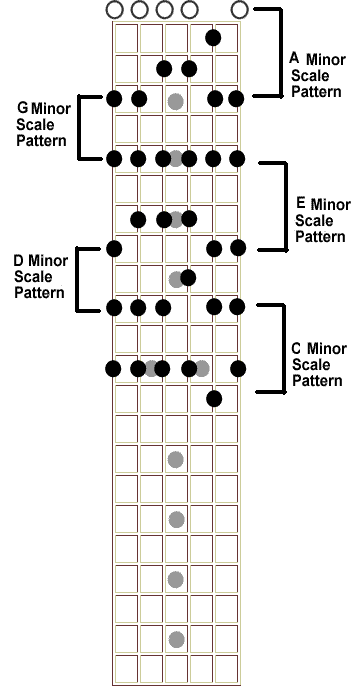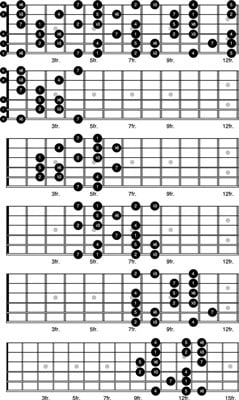
Previously, we learned about the musical alphabet and the major scale. Up your game guys.Next→ Analysis of Common Chord Progressions in Popular Music The Minor Scale Formula But the Blues scale has six notes, making it hexatonic. Penta means five, Pentatonic means five notes (or tones).


Notes in Key of A Blues: A C D Eb E G Scale Degrees: 1 3 4 5 5 7 Alternative Names: A Minor Blues Scale Is a Mode of: C Major Blues Scale Important Modes: The Major Blues Scale is built on the bIII Minor Blues Scale: Scale Degrees and Scale Spelling The Blues Scale Quality / Family: Minor Also Classified As: If we want to refer to the Major Blues scale we must say Major Blues Scale. So when we say "the Blues Scale" we are just using a shortened name for the Minor Blues Scale. Since the most common type of chord is major we can shorten the name of G Major chord to just G chord. If I asked you to play a G chord you would (I hope) play a G Major chord. The Minor Blues scale is the far more commonly used scale of the two, so as in the norm in music, it gets shortened to "The Blues Scale." Its just like with chords. The Minor Blues Scale, not the Major Blues, is "Standard" The Major Blues scale is built on the flatted third scale degree ( 3 ). Unlike the Major or Minor scale, which have functional (meaning they sound good at least sometimes) modes built on every note in the scale, the Blues Scale only has one functional mode, the Major Blues scale mentioned above. There is also a Major Blues Scale (See Modes of the Minor Blues Scale Below), and both are commonly used by guitar players in several different musical genres. This is the scale you see in the Guitar Scale chart on this page. Since it contains a flatted third and a natural fifth, the Minor blues Scale is, by definition a Minor scale. "Minor Blues Scale" The Blues Scale Name Game The Blues Scale is is both historically and theoretically the foundation of all of three genres (and their sub-genres).

If you play Rock, Blues, or Metal guitar, the Blues Scale is the single most important scale to know. The truth is everything seems next to impossible when you are starting out, so you might as well use the actual chords and scales that big boys and girls use. Then you play with other people and find you just can't hang because all you know is "beginner" stuff.

Its extermely common for books, videos, and teachers to show you what they think is easier so you'll feel like you are making more progress. Let me let you in on a dirty little secret of music education. Don't waste time on Minor Pentatonic yet, this one simply owns it. That goes for my guitar students and those studying independently. This is the first scale you should learn.


 0 kommentar(er)
0 kommentar(er)
